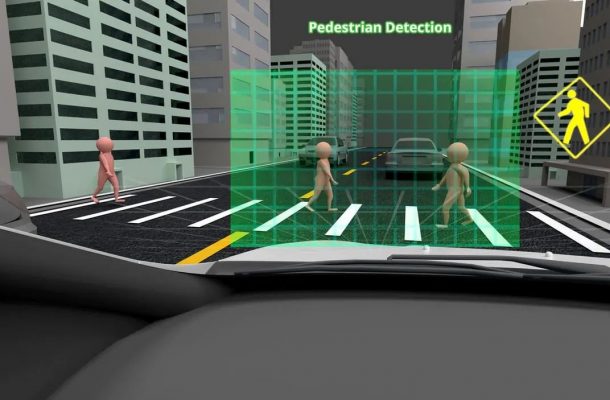A quiet revolution is taking place in the car industry – one that promises enormous benefits, but one that can also deliver unintended risks if it’s not correctly managed.
While the autonomous vehicles concept – aka, the Jetsons future – is much-discussed (and arguably over-hyped), hybrid-electric and electric cars are already here. Electric vehicles come with the promise of immense environmental benefits, including reduced carbon emissions and lower noise pollution.
To date, the uptake of electric vehicles in Australia has lagged behind other countries, largely due to concerns about “range anxiety”, relatively higher purchase price, a low number of available vehicle models for purchase, and few charging stations.
Indeed, there are about 8500 electric vehicles on Australian roads, in the context of 1.1 million new car sales each year. However, market penetration of these vehicles into the Australian fleet will grow as these implementation challenges are addressed.
By 2050, electric vehicles will be the dominant type on our roads with more than 500 million sold worldwide, at which point the environmental benefits will be fully realised as the internal combustion petrol and diesel engine is consigned to the dustbin.
Hidden costs?
While attractive on many levels, however, is there an underlying hidden cost yet to be fully understood?
In a car-centric society such as Australia’s, many rely on motor vehicles to commute daily. As a consequence, our lifestyles have become increasingly sedentary, resulting in a host of both physical and mental health repercussions such as obesity and depression.

It’s no wonder, then, that recent health promotion efforts have focused on advocating for more active living through developing sustainable and inclusive cities that encourage the community to use active forms of transport such as walking. However, given the dominant car culture and the way our road infrastructure is presently designed, built and operated, commuting as a pedestrian isn’t without its risks.
Statistics from the Bureau of Infrastructure, Transport and Regional Economics (BITRE) reveal that between 2008 and 2017 (10-year period), 1724 pedestrians were killed on Australian roads, with close to 75 per cent involving a passenger vehicle. In addition, 21,657 pedestrians were hospitalised between 2008-2015 after being struck by a vehicle.
For the families that have lost a loved one and for those injured, the impacts are profound and life-changing.
It’s clear that pedestrian trauma remains a significant issue. Put into context, these statistics add up to more than the entire crowd at the Australian Open tennis final at Rod Laver Arena.
As children, we were taught how to cross the road: “Stop at the kerb, look to the right, look to the left, look to the right again, then if the road is clear of traffic, walk straight across the road, don’t run…” For those old enough to remember Hector the Cat, no doubt that jingle is playing in your head this very minute, while millennials ought to head to YouTube to check out some historical marketing genius.
For most of us, the ability to use our sight and hearing to detect oncoming traffic as a pedestrian is a given. Now, imagine one day, you’re living in a city where quiet vehicles comprise the majority of cars, and you have to make your way down to the shops – blindfolded. How would you approach that task?
Challenging commutes
According to Vision Australia, more than 380,000 Australians are blind or have low vision. For these people, walking is their main means of commuting, and each day when stepping out alone or with friends, perhaps using a white cane or a working dog, they’re confronted with a range of challenges to successfully travel from point A to B.
When navigating the road network, many pedestrians who are blind or have low vision rely largely on their sense of hearing to determine whether it’s safe to move forward through cross roads. Engine noise and the noise tyres make on the road become vital cues. Being able to hear these sounds can mean the difference between taking the first step onto the road and crossing safely, or being injured – perhaps killed.
What will it mean, then, when cars are so quiet that they can no longer be heard when travelling at low speed, given the absence of engine sound and the much lower noise made by tyres on the road? What are the associated risks?
Findings from a survey of the blind and low-vision community found that more than one-third of respondents reported having experienced either a collision or near-collision with an electric vehicle.
In a study conducted by Monash University Accident Research Centre (MUARC), findings from a survey of the blind and low-vision community found that more than one-third of respondents reported having experienced either a collision or near-collision with an electric vehicle.
Further, three-quarters of respondents indicated that the introduction of electric/hybrid vehicles had reduced their confidence to walk and cross roads.
These numbers are staggering, especially when electric vehicles currently account for only 0.1 per cent of the total Australian passenger car fleet.
Even more concerning are comments made by participants in the series of focus groups that were run as part of the study. One participant talked about her experience as a pedestrian with low vision saying, “you just go out and hope for the best”, having experienced a number of near-miss collisions with vehicles in the past. Another participant reflected on the risks she felt and said: “There’s no alternative … what are my other options but to keep taking the risk?”
Remember this is now, when there are few quiet electric vehicles on our roads.
Solving a pedestrian problem
With this scenario unfolding right now, the question is, are there options to resolve this threat to pedestrian safety? And the answer is a definitive yes.
Since the arrival of the first hybrid vehicle in the early-mid-2000s overseas, questions about their risk to pedestrians have been asked, first in the US, then Europe, and in the past few years Japan, Korea and China, among others. These questions have focused on the potential road safety risk that quiet vehicles represent, and has led to the implementation of new vehicle safety laws in a number of countries.
For example, in the US, quiet vehicles are fitted with devices that are required to emit sound when travelling at speeds under 30km/h. For vehicles sold in Europe and elsewhere, the United Nations adopted UN Regulation No.138-01 in 2017, providing specifications for acoustic vehicle alerting systems (AVAS) fitted to electric vehicles. This system emits a noise of 75 decibels when vehicles travel at speeds of 20km/h or less.
These laws and regulations have been developed due to the threat quiet vehicles pose to the safety of pedestrians – not only for those who are blind or have low vision, but also to other vulnerable pedestrian groups such as children or the elderly, who may have slower reaction times to oncoming vehicles.

The benefit of this vehicle technology may extend to inattentive pedestrians, including “phone-zombies”. And yes, wearing headphones crossing the road carries other risks as well, and would certainly limit the effectiveness of the technology. But with the huge safety benefit of preventing pedestrian trauma, the question needs to be asked as to why Australia at present lacks regulation for the quiet vehicles brought into the market.
Recommendations for change
Our recent report makes a number of recommendations, the key one being the adoption of the UN Regulation No.138-01 as an Australian Design Rule (ADR). This action will bring us into line with other countries and ensure that vehicles sold in Australia are as safe as those available overseas, the benefit of which will be fewer pedestrians killed and injured.
These recommendations have not gone unheard, having been cited in the recently released report by the Senate Select Committee on Electric Vehicles, with meetings and support from key members of the Parliamentary Friends of Road Safety and ongoing lobbying from Vision Australia.
With such high levels of pedestrian trauma, the need for enhanced vehicle safety technology is evident. The technology to help all pedestrians is available now, and continued support and momentum is needed.
The time is right
With the number of quiet vehicles in the Australian fleet being so low at present, now is the ideal opportunity for forward-thinking and proactive regulation to mitigate what will inevitably be a real threat to road safety and the goal of achieving zero deaths and injuries on our roads.
Everyone in our community has the right to feel safe when they step outside.
And short of all these points, one that remains most pertinent is that everyone in our community has the right to feel safe when they step outside.
While this one step certainly doesn’t address all current road safety concerns in Australia, requiring manufacturers to fit a very low-cost technology has the potential to eliminate added risk for all pedestrians. Doing so will ensure that the enormous environmental benefits associated with the gradual penetration of electric/hybrid vehicles do not outweigh the costs.
The time to act is now.
This article was written by Michael Fitzharris, an Associate Professor at Monash Universit, and Sara Liu, a Research Fellow at the Monash University Accident Research Centre. It was published by Lens.











